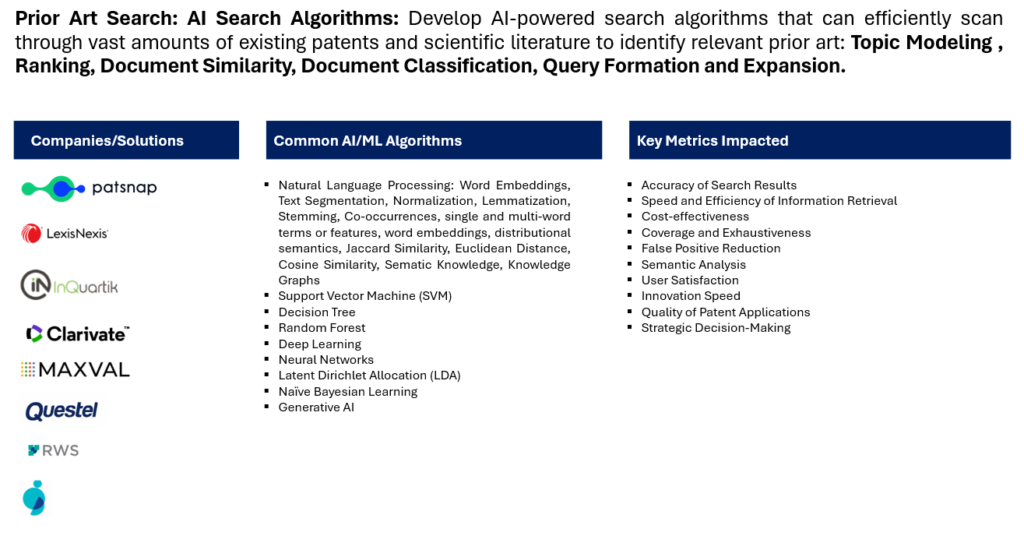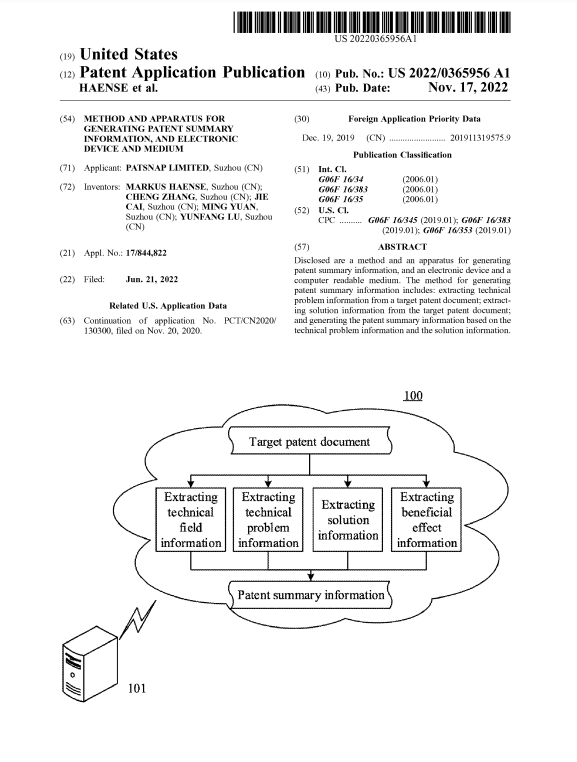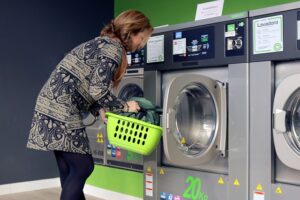Artificial Intelligence (AI) and Machine Learning (ML) can significantly impact patent management by automating and optimizing various tasks. By leveraging AI and ML in these areas, patent management processes can become more efficient, accurate, and proactive, ultimately enhancing the overall effectiveness of intellectual property management strategies. There are several applications and areas where AI/ML can be applied in patent management: Prior Art Search, Automated Patent Drafting, Patent Classification, Patent Valuation, Automated Patent Filing and Prosecution, Patent Portfolio Management, Patent Analytics, Infringement Detection, Technology Landscape Analysis, Patent Litigation Support, Automated Patent Maintenance and Collaborative Innovation Platforms.
A: Prior Art Search (Patent Searching)
In a patent document, the discussion of prior art is typically found in the “Background” or “Description of Related Art” section. This section provides context and describes existing technologies or solutions related to the invention. The purpose is to establish the state of the art at the time of filing and highlight the novelty and inventiveness of the claimed invention. In this section, the patent applicant may discuss various documents, publications, patents, or other sources that represent the prior art. These references help define the problem that the invention aims to solve and demonstrate why the claimed invention is innovative. The prior art references may include: Published Patents: Previous patents that disclose relevant technologies or solutions. Scientific Papers: Academic papers and articles discussing related inventions or technologies. Industry Publications: Magazines, journals, or other publications within the relevant industry. Books: Relevant books discussing technologies or methods related to the invention. By citing prior art, the patent applicant aims to distinguish their invention from what already exists and emphasize the unique aspects of their contribution. It’s crucial for a patent examiner to evaluate the claimed invention against the existing prior art to determine its patentability.
A thorough prior art search is an essential step in the patenting process, contributing to the success of patent applications and the protection of intellectual property. It enables inventors, patent attorneys, and patent examiners to make informed decisions about the patentability and uniqueness of an invention. Prior art search, often referred to as a patent search or technology search, is a process of identifying and reviewing existing information related to a specific invention or technology. The goal is to determine whether the invention is novel and non-obvious, meeting the requirements for patentability. Prior art encompasses all publicly available knowledge, including existing patents, scientific publications, technical reports, and other documents relevant to the technology in question.
How is it Performed? (Step by Step): Define the Invention: Clearly define the key aspects of the invention, including its features, functionalities, and potential applications. Identify Relevant Keywords: Compile a list of keywords and phrases related to the invention. Consider synonyms, technical terms, and variations to ensure a comprehensive search. Search Patent Databases: Utilize patent databases such as the United States Patent and Trademark Office (USPTO), the European Patent Office (EPO), and others. Conduct keyword searches in these databases to identify existing patents and patent applications related to the invention. Explore Scientific Literature: Search scientific databases, journals, and publications for articles, papers, and technical documents relevant to the invention. Consider using academic databases like PubMed, IEEE Xplore, and Google Scholar. Use Online Search Engines: Conduct general online searches to identify non-patent literature, industry publications, and other sources that may contain relevant information. Review Non-Patent Literature: Explore non-patent literature sources, including conference proceedings, technical reports, and product literature. Consult Legal Resources: Review legal databases and litigation records to identify any challenges or disputes related to similar technologies. Analyze the legal status of existing patents to understand if they are still in force. Evaluate Foreign Patents: Extend the search to include patents filed in foreign countries, as innovations may be documented in different jurisdictions. Document and Analyze Findings: Compile a comprehensive list of relevant prior art, including patent numbers, publication dates, and authors. Analyze the identified prior art to assess its relevance to the invention and to understand the state of the art.
Why is it Important? Establishing Novelty: Demonstrates whether the invention is novel and has not been disclosed in existing patents or literature. Ensuring Non-Obviousness: Helps determine whether the invention involves an inventive step by assessing the level of innovation compared to existing technologies. Avoiding Patent Infringement: Identifies existing patents and technologies to avoid unintentional infringement and legal conflicts. Supporting Patent Application: Provides crucial information and references to strengthen a patent application during the examination process. Informing Research and Development: Offers insights into the current state of technology, guiding further research and development efforts.

Prior art search involves finding information about existing technologies or solutions relevant to a new invention. The application of machine learning techniques, including supervised learning, unsupervised learning, and deep learning, can enhance the efficiency and effectiveness of prior art searches. The application of machine learning in prior art search helps automate the process, reduce the manual effort required, and uncover relevant information more efficiently. It allows for the exploration of large patent datasets, identification of hidden patterns, and the extraction of meaningful insights for inventors, patent examiners, and legal professionals.Here are examples of each approach:
Supervised Learning: Training a Text Classification Model. Use a labeled dataset where documents are labeled as relevant or non-relevant to a specific technology area. Train a supervised learning model, such as a support vector machine (SVM) or a neural network, to classify documents based on their relevance to the technology of interest. Apply the trained model to new documents to predict their relevance to the technology, thereby aiding in the identification of prior art.
Unsupervised Learning: Clustering Similar Documents. Utilize unsupervised learning algorithms like k-means clustering or hierarchical clustering to group similar documents based on patterns and features. Since unsupervised learning doesn’t require labeled data, it can identify patterns and similarities in documents without predefined categories. Unsupervised learning helps discover hidden patterns and similarities in large patent datasets, aiding in the identification of relevant prior art.
Deep Learning: Neural Networks for Document Embeddings. Use deep learning techniques, such as recurrent neural networks (RNNs) or transformer models, to learn meaningful representations (embeddings) of patent documents. Deep learning models can capture semantic relationships between words and concepts, enabling a more nuanced understanding of document content. Pre-trained models on large text corpora can be fine-tuned for specific tasks, making them effective in learning representations relevant to prior art search.
Hybrid Approaches: Combining Supervised and Unsupervised Methods. Use a supervised model to provide initial relevance labels for a subset of documents. Apply unsupervised methods to cluster similar documents, combining labeled and unlabeled data. Utilize active learning strategies to iteratively improve the supervised model’s performance with user feedback.
Several companies and platforms leverage AI for prior art search in the field of intellectual property. Keep in mind that the landscape may have evolved since then, and new developments or companies may have emerged. Here are a few companies and platforms known for using AI in prior art search: IBM Watson for Drug Discovery: Application: IBM Watson for Drug Discovery uses AI to analyze scientific literature, clinical trial data, and other relevant sources to identify potential drug candidates and understand their prior art. PatSnap: PatSnap combines AI, machine learning, and big data analytics to provide a comprehensive IP intelligence platform. Their tools cover various aspects, including prior art search, patent analysis, and technology landscaping. Darts-ip: AI Integration: Darts-ip combines machine learning and legal expertise to enhance IP research and analytics, including prior art search and patent litigation data. Questel Orbit: AI Tools: Questel Orbit offers AI-driven tools for prior art search, patent analytics, and IP portfolio management. Questel provides IP solutions, and their platform integrates AI and machine learning for comprehensive prior art searches. It aims to enhance the efficiency and accuracy of searching and analyzing patent documents. Thomson Reuters InnovationQ: AI Capabilities: Thomson Reuters suite employs AI to improve the efficiency of prior art searching and patent analysis. PatentSight: AI Analytics: PatentSight provides AI-driven patent analytics and prior art search capabilities, helping users gain insights into patent landscapes and technology trends. Google Patents: Machine Learning: Google Patents, while not exclusively AI-focused, utilizes machine learning algorithms to enhance patent search capabilities and identify relevant prior art. IP.com: Prior Art Database: IP.com offers a prior art database with advanced search capabilities, including semantic search and natural language processing. Relecura: AI-Powered Insights: Relecura uses AI to provide patent analytics, including prior art search, technology landscapes, and competitive intelligence. Omnity: Semantic Search: Omnity employs semantic search capabilities powered by AI to identify connections and relationships between documents, aiding in comprehensive prior art searches.
Cipher.ai: Cipher.ai uses artificial intelligence and machine learning to provide advanced IP analytics and competitive intelligence. Their platform assists in tasks such as patent portfolio analysis, technology landscapes, and prior art searches. InQuartik Corporation: InQuartik’s platform, Patentcloud, utilizes AI to offer various IP intelligence services. Their solution includes a Prior Art Search tool that aims to streamline and enhance the efficiency of prior art searches. MaxVal: MaxVal offers IP management solutions, including an AI-powered platform called Symphony. Symphony includes features for patent searching, portfolio management, and competitive intelligence. Article One Partners (AOP): AOP utilizes a crowd-based approach combined with machine learning to conduct patent research and prior art searches. They involve a community of researchers to assist in finding relevant information. GreyB Services: GreyB specializes in IP research and analytics. Their platform, Ambercite, incorporates AI to improve the precision and speed of prior art searches, particularly focusing on citation-based search methods.
Implementing Artificial Intelligence (AI) and Machine Learning (ML) in prior art searches for patenting can positively impact several key performance indicators (KPIs). It’s important to note that the effectiveness of AI/ML in prior art searches may vary based on the specific algorithms used, the quality of training data, and the sophistication of the technology implemented. Continuous refinement and validation of AI models contribute to better results over time:
Accuracy of Search Results: AI/ML algorithms can enhance the accuracy of prior art searches by identifying relevant documents more efficiently than traditional methods. This improvement in precision helps in obtaining more reliable and pertinent results. Speed and Efficiency: Automation through AI/ML significantly accelerates the prior art search process. Algorithms can quickly analyze vast amounts of data, reducing the time it takes to complete a comprehensive search. Cost-effectiveness: By automating repetitive tasks and reducing the manual workload, AI/ML applications can contribute to cost savings in terms of time and resources required for conducting prior art searches. Coverage and Exhaustiveness: AI-powered tools can cover a broader range of data sources and provide more exhaustive results. This ensures that the prior art search is comprehensive, leaving fewer chances of missing relevant information.
False Positive Reduction: ML algorithms can be trained to minimize false positives, ensuring that the results presented in the prior art search are more relevant and directly applicable to the invention in question. Semantic Analysis: AI/ML techniques enable semantic analysis, allowing systems to understand the context and meaning of documents. This enhances the relevance of search results by considering not only keyword matches but also the semantic relationships between terms. User Satisfaction: Improved search accuracy and efficiency contribute to higher user satisfaction. Patent professionals and inventors can benefit from more precise and relevant results, ultimately enhancing their experience with the patent search process.
Innovation Speed: Faster and more accurate prior art searches facilitated by AI/ML can accelerate the innovation process. Reduced time in obtaining relevant information allows inventors and organizations to make quicker and more informed decisions. Quality of Patent Applications: The improved prior art search results contribute to the quality of patent applications. A more thorough search helps in crafting stronger patent claims and reducing the likelihood of patent challenges. Strategic Decision-Making: AI/ML-driven analytics can assist in extracting valuable insights from prior art data, aiding strategic decision-making for research and development activities, patent filing strategies, and intellectual property management.
A: Example

The disclosed invention involves a method, apparatus, electronic device, and computer-readable medium for generating patent summary information. The method includes the following steps:
Extracting Technical Problem Information: Identifying and retrieving technical problem information from a specified patent document. This involves capturing details related to the challenges or issues addressed by the patent.
Extracting Solution Information: Identifying and retrieving solution information from the same patent document. This step involves capturing details about the solutions or innovations provided in response to the identified technical problems.
Generating Patent Summary Information: Utilizing the extracted technical problem information and solution information to create a comprehensive patent summary. The summary consolidates key details from the patent document, providing a concise overview of the addressed technical problems and the solutions presented.
References
Prior Art Search:
Book: “Patent Searching: Tools & Techniques” by David Hunt, Long Nguyen, and Matthew Rodgers
Article: “Advanced Techniques for Patent Searching” by Martin Wallace (World Patent Information, 2015)
Article: “Prior Art Searching 2.0: Big Data and Patent Analytics” by Stephen Adams (World Patent Information, 2017)
Website: Google Patents (For practical understanding and examples)
Course: “Patent Searching Fundamentals” on WIPO Academy




